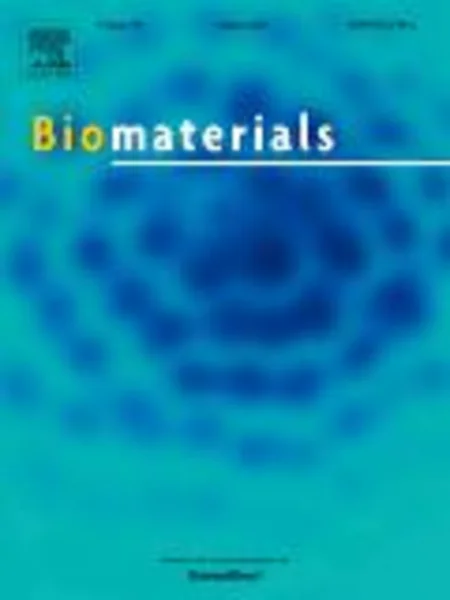-
in vivo biocompatibility and biodegradation of 3d-printed porous scaffolds based on a hydroxyl-functionalized poly(ε-caprolactone)
جزئیات بیشتر مقاله- تاریخ ارائه: 1391/01/01
- تاریخ انتشار در تی پی بین: 1391/01/01
- تعداد بازدید: 792
- تعداد پرسش و پاسخ ها: 0
- شماره تماس دبیرخانه رویداد: -
the aim of this study was to evaluate the in vivo biodegradation and biocompatibility of three-dimensional (3d) scaffolds based on a hydroxyl-functionalized polyester (poly(hydroxymethylglycolide-co-ε-caprolactone), phmgcl), which has enhanced hydrophilicity, increased degradation rate, and improved cell–material interactions as compared to its counterpart poly(ε-caprolactone), pcl. in this study, 3d scaffolds based on this polymer (phmgcl, hmg:cl 8:92) were prepared by means of fiber deposition (melt-plotting). the biodegradation and tissue biocompatibility of phmgcl and pcl scaffolds after subcutaneous implantation in balb/c mice were investigated. at 4 and 12 weeks post implantation, the scaffolds were retrieved and evaluated for extent of degradation by measuring the residual weight of the scaffolds, thermal properties (dsc), and morphology (sem) whereas the polymer was analyzed for both its composition (1h nmr) and molecular weight (gpc). the scaffolds with infiltrated tissues were harvested, fixed, stained and histologically analyzed. the in vitro enzymatic degradation of these scaffolds was also investigated in lipase solutions. it was shown that phmgcl 3d-scaffolds lost more than 60% of their weight within 3 months of implantation while pcl scaffolds showed no weight loss in this time frame. the molecular weight (mw) of phmgcl decreased from 46.9 kda before implantation to 23.2 kda after 3 months of implantation, while the molecular weight of pcl was unchanged in this period. h nmr analysis showed that the degradation of phmgcl was characterized by a loss of hmg units. in vitro enzymatic degradation showed that phmgcl scaffolds were degraded within 50 h, while the degradation time for pcl scaffolds of similar structure was 72 h. a normal foreign body response to both scaffold types characterized by the presence of macrophages, lymphocytes, and fibrosis was observed with a more rapid onset in phmgcl scaffolds. the extent of tissue–scaffold interactions as well as vascularization was shown to be higher for phmgcl scaffolds compared to pcl ones. therefore, the fast degradable phmgcl which showed good biocompatibility is a promising biomaterial for tissue engineering applications.
مقالات جدیدترین رویدادها
-
استفاده از تحلیل اهمیت-عملکرد در ارائه الگوی مدیریت خلاقیت سازمانی و ارائه راهکار جهت بهبود
-
بررسی تاثیر ارزش وجوه نقد مازاد بر ساختار سرمایه شرکت های پذیرفته شده در بورس اوراق بهادار تهران
-
بررسی تأثیر سطح افشای ریسک بر قرارداد بدهی شرکت های پذیرفته شده در بورس اوراق بهادار تهران
-
بررسی تأثیر رتبه بندی اعتباری مبتنی بر مدل امتیاز بازار نوظهور بر نقد شوندگی سهام با تأکید بر خصوصی سازی شرکت ها
-
تأثیر آمیخته بازاریابی پوشاک ایرانی بر تصویر ذهنی مشتری پوشاک ایرانی (هاکوپیان)
-
انتخاب گزینه محل سد برروی پی های مسئله دار از نوع خش لغزه (slican side)
-
نقش دوچرخه در ترافیک شهری اهواز
-
برنامه ریزی الگوهای اسکان موقت پس از زلزله احتمالی منطقه ورامین با تاکید بر گروه های اجتماعی
-
hydrodynamics of a flapping foil in the wake of a d-section cylinder
-
biochemical status of in vitro regenerated lilium bosniacum and lilium cattaniae plantlets
مقالات جدیدترین ژورنال ها
-
مدیریت و بررسی افسردگی دانش آموزان دختر مقطع متوسطه دوم در دروان کرونا در شهرستان دزفول
-
مدیریت و بررسی خرد سیاسی در اندیشه ی فردوسی در ادب ایران
-
واکاوی و مدیریت توصیفی قلمدان(جاکلیدی)ضریح در موزه آستان قدس رضوی
-
بررسی تاثیر خلاقیت، دانش و انگیزه کارکنان بر پیشنهادات نوآورانه کارکنان ( مورد مطالعه: هتل های 3 و 4 ستاره استان کرمان)
-
بررسی تاثیر کیفیت سیستم های اطلاعاتی بر تصمیم گیری موفق در شرکتهای تولیدی استان اصفهان (مورد مطالعه: مدیران شرکتهای تولیدی استان اصفهان)
-
پیش بینی کیفیت زندگی براساس خوش بینی در بیماران هموفیلی
-
بررسی تأثیر مالیات برارزش افزوده، بردرآمدهای پایدار شهرداری های
-
تحلیل اقتصادی آثار جانبی ناشی از استفاده اموال با مطالعه حقوق ایران
-
investigate the relationship between delegation of authority, sense of responsibility, customer-oriented and moderating variables
-
design charts for axially loaded single pile action




سوال خود را در مورد این مقاله مطرح نمایید :